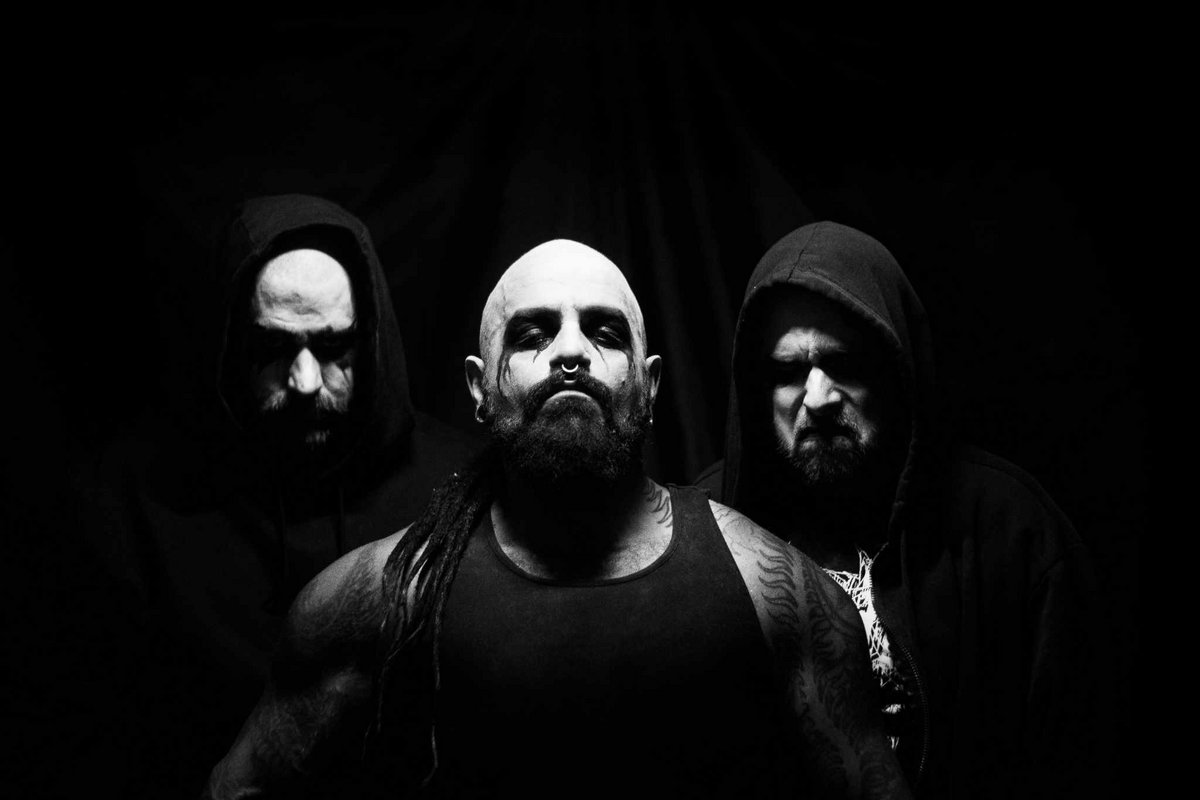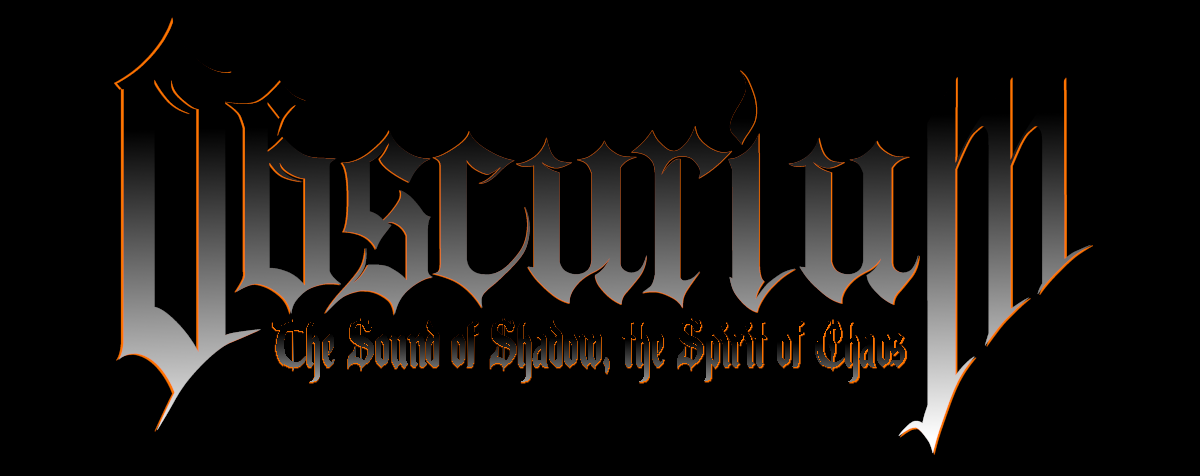
In 1999, Shade released ISA, a cult album in the Québec black metal scene, through the now-defunct label Frowz Productions. Shortly afterward, the band split up, leaving behind a rare record and a mysterious aura.
Almost twenty-five years later, Shade returns with Temple for the End of Days, an album entirely composed of songs written and performed back in the day, but never released until now. Out digitally on Bandcamp, this new opus marks a resurrection for Holokausto and his comrades-in-arms.
We spoke with Holokausto (guitars) to look back on the history of Shade, their place in the Québec black metal scene of the late 1990s, and their perspective on this unexpected return.
Originally spoken in French, translated for the cult masses
Shade – Temple for the End of Days, the Return of a Pioneer of Québec Black Metal (Interview with Holokausto)
Introduction
Hi Holokausto, thanks for accepting this interview. Shade played a key role in the beginnings of Québec black metal in the late ’90s, and with the band returning in 2025, it’s really special to revisit all of this with you. First, how are you doing? And how does it feel to dive back into that era and see Shade coming to the forefront again after all these years?
We’re glad to have finally released the album we should have put out a long time ago. It was a chapter we needed to close, and now that it’s done, we’re all satisfied. I was surprised at how easily I remembered the songs, probably because we used to play them a lot live back then. But playing the songs again and seeing the project resurface is really like diving back into the past.
The Origins of Shade
Can you take us back to the late ’90s? How was Shade formed, and how did you position yourselves in the Québec black metal scene between 1998 and 2000?
At school and in my neighborhood, everyone was into extreme music: death metal, grind, melodic death… Personally, I quickly got hooked on black metal because it was darker and felt more real. It was hard to get the albums, they came from far away, they were rare, they often sounded bad, and on top of that, they were expensive. So owning a black metal collection at that time was impressive. But that’s what created the vibe of the early black metal bands.
In the band I was playing in back then, everyone had their own influences, and at first we ended up mixing a bit of everything. But to me, it lacked direction and wasn’t very interesting. So I thought, why not create the band I wanted to see exist, with a clear orientation toward organic-style black metal? Those who wanted to follow came on board. Érik and Mordenhave joined me, and we started jamming.
A little later, the guy who would become our singer stumbled upon a demo by chance. He contacted us to say he liked what he heard and wanted to sing with us. He was older than us and had some contacts, so that helped get things moving.
ISA was released in 1999 on Frowz Productions, in a limited edition. How did that collaboration with the label come about? Did you already have many contacts in the scene, or was it more word of mouth?
That was a long time ago, so my memories are a bit blurry. I remember it was mostly the singer who handled promotion and contacts, while I focused more on writing. What’s for sure is that being signed to a label—even a local one—opened doors. It helped multiply contacts, introduced us to people, and gave us a place in the music world.
Did you get the chance to play live shows back then? If so, how was it at the time, and do you have any memorable anecdotes?
We did shows fairly regularly. Looking back, it’s almost strange, because our style of black metal wasn’t really the most suited for the stage—it was misanthropic and personal. But we still went on stage with other local bands, some death metal, but also melodic black metal. Pretty much all the black metal bands had keyboards back then. They couldn’t resist. We weren’t fans of keyboards at the time… and honestly, still aren’t today.
Not sure we had “memorable” moments—it was mostly around Québec, Montréal, and nearby towns. In Québec City it worked well. I remember we did a round trip for a Québec–Montréal show, and people from Québec came along. That created a good atmosphere. It feels good when you play a Darkthrone cover live and people in the crowd recognize it because they know Darkthrone.
Otherwise, I remember one outdoor show during the day, on a big Budweiser stage in Shawinigan or Victoriaville. It made no sense with our nails and corpsepaint. I have no idea what we were doing there, haha. We had fun scaring people off… We didn’t care, we just wanted to put on the show.
You split up shortly after. What were the main reasons behind that decision?
Let’s say the singer was useful for promotion and contacts, but he also had a side that was a problem for us. He was deeply into hateful and extremist stuff, and it came through in his lyrics. That didn’t match who we were at all. We didn’t want to be associated with that kind of ideology, so we let him go. Since he was sort of the engine of the band, we ended up calling it quits. Personally, I started exploring other forms of black metal and then moved on to other things.
Even afterward, it kept being an issue: he released a split with a hateful band without asking us. For a long time, we hesitated to reform because of that—we thought the name had been tainted. But it’s important to know the rest of the band had nothing to do with that crap.
The Return and the New Album
You got back together to record the album you had planned to release a long time ago. What rekindled that flame after all these years?
Good question. I thought about it often, telling myself: I can’t leave it like this, I still have the songs in my head, I need to do something. This year, since I had taken a break from my other projects, I told myself it was now or never. I had always stayed in touch with Erik, even if we rarely saw each other, and he was still connected with Mordenhave. I ended up recording a demo of one track—I don’t remember which—and Erik played it for Mordenhave, who replied: “Go! Let’s do it!”
The album came out this past July, digitally on Bandcamp only. How did the creation and recording process go? Did the songs remain faithful to the versions you played live back then?
All the riffs are entirely from 1999. I didn’t change a single note. Even the passages I would modify today, I left them as they were. I wanted it to remain a voice from the past coming back to life.
Production-wise, though, we’ve each evolved differently. Personally, I would have preferred a more raw black metal sound, but the others leaned toward something a bit clearer. So that’s the direction we took. The riffs stand out better, but we lose some of the raw edge—it was a choice. So I had to put my Metal Zone pedal aside.
On ISA, Eric was on drums, Mordenhave on bass, and you on guitar. Is it the same lineup for Temple for the End of Days, or were there changes?
I wanted to redo the album with the original members to recreate the spirit of the time. Erik hadn’t played drums in years, so we took what he could give us on his kit, then integrated it into the sound and aligned everything on the grid. He was present throughout the studio process. Mordenhave took on the role of vocalist since he already had experience in that role. Since we wanted a clean and tight album, I recorded the bass and guitars myself to make the process faster.
You chose self-production, without a label. Would you eventually like to work with a label again, release the album on CD or vinyl, or even offer merch?
We’ll potentially release the album on cassette. In fact, the remaster of ISA will be out on cassette through Clerical Music in the US within a week. It should be available on Bandcamp soon. Clericalmusic.bigcartel.com
We don’t really have a precise promotion plan. We just wanted the album to exist—and now it does.
Are there any shows planned to promote this new album? If so, how could it work today with your current lineup?
The idea of playing live still interests me, but with the current lineup, it would be complicated. We aimed for something very precise on the album, so it would have to sound just as tight live.
If there are motivated musicians who want to join the project, or even carry the torch forward, I wouldn’t close the door. But honestly, there’s little chance of that happening.
Perspectives and Reflections
You also worked on Thren, with two albums (2009 and 2016). Did that influence your approach to Shade’s return?
Since the Shade songs already existed, it was more of a return to the roots than a new direction. Thren’s style is very different: darker, more occult, with a satanic atmosphere. Shade, on the other hand, fits more into the old-school Norwegian black metal branch, with wide, forest-like, almost epic chords. Both projects are black metal, but they clearly belong to two different schools.
What were the influential black metal albums when you were writing the songs for ISA?
Shade’s era was concentrated in a short period, so I clearly remember the albums that were on rotation for me at the time:
- Satyricon – Nemesis Divina
- Ulver – Nattens Madrigal
- Gorgoroth – Under the Sign of Hell
- Darkthrone – pretty much everything, but at that time Total Death had just come out
- Arckanum – Kampen
- Borknagar – Borknagar
What’s your view of today’s black metal scene, both in Québec and internationally?
I think the scene is in great shape. Social media makes it easier to exchange and self-promote, which helps bands get noticed more easily, even internationally. Black metal has always been a very visual and conceptual genre. Today there are just more tools to push that universe even further, whether in imagery, album artwork, or stage design. Sure, it creates saturation, but if you see it as a mode of expression rather than a career, it’s perfectly healthy.
If you had to present Shade to someone who has never heard the band, how would you describe your music and your world?
Shade is the archetype of old-school ’90s black metal, with all the clichés of the genre, but we kept the essence of the era with a 2025-style production.
Thank you, Holokausto, for your time. Do you have anything you’d like to add for people rediscovering you today, or for the older fans who were already following you back in 1999?
The album is here for those who want to hear what we had to say back then but never got the chance to record.
➡️➡️ Follow Shade on Bandcamp ⬅️⬅️
